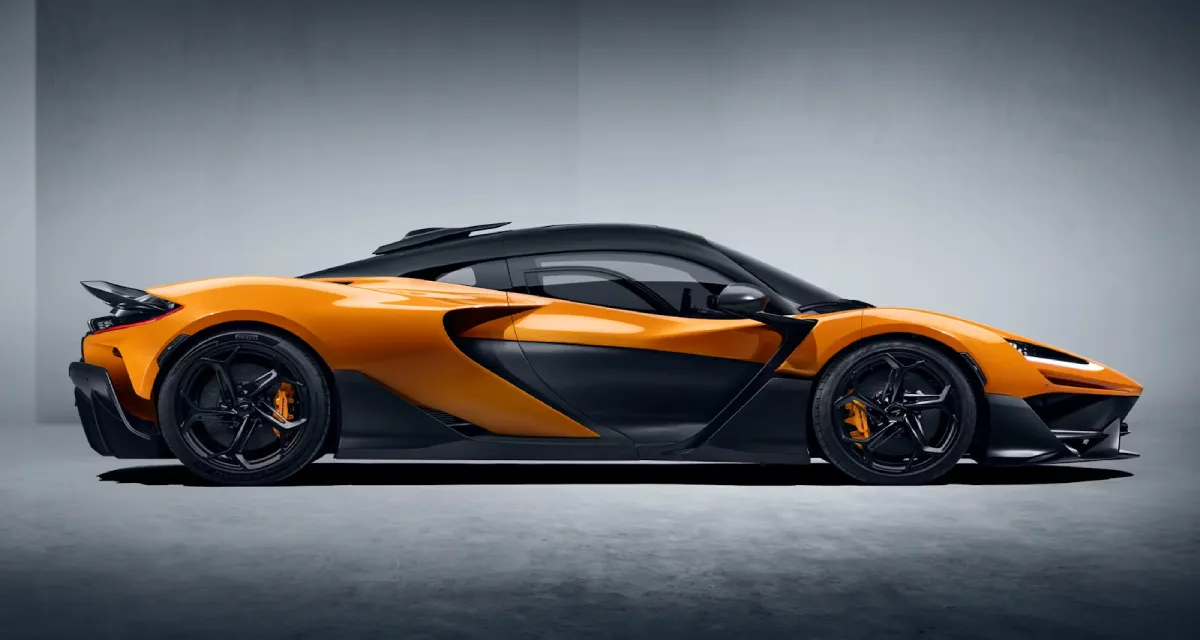

McLaren has officially lifted the curtain on the much-anticipated W1 hypercar, which is being hailed as the true successor to the legendary McLaren P1. With jaw-dropping performance figures and cutting-edge technology, the W1 redefines what’s possible for hybrid hypercars. Following the groundbreaking McLaren F1 and the P1, the W1 is poised to become the next legend in McLaren's storied hypercar lineage, delivering more power, performance, and sophistication than any of its predecessors.
The McLaren W1 is powered by a hybrid setup that combines a 4.0-litre twin-turbo V8 engine with an advanced electric motor. The V8, built in collaboration with Ricardo, churns out a staggering 928hp, making it the highest output McLaren engine to date. This engine works in tandem with a 347hp electric motor, which draws energy from a 1.384kWh battery. This brings the total output of the W1 to an astonishing 1,275hp and 1,340Nm of torque.
The W1’s power is not just about brute force—it’s also about refinement. The hybrid system in the W1 weighs 40 percent less than the one in the P1, but produces 40 percent more power. The hypercar rockets from 0-100kph in just 2.7 seconds, and it reaches 0-200kph in a blistering 5.8 seconds. The top speed is electronically limited to 350kph, and McLaren promises a dramatic crescendo from the V8 as it nears its 9,200rpm redline.
The W1 comes equipped with various driving modes, including Sprint mode, GP mode, and Boost, all of which offer different levels of electric assistance to optimize performance for different driving scenarios. The hypercar also features a Formula 1-inspired drag reduction system (DRS) on the rear wing, helping to further enhance its already impressive straight-line speed.
One of the key aspects that sets the McLaren W1 apart from its predecessors is its aerodynamic prowess. Like the Aston Martin Valkyrie, the W1 employs true ground-effect aerodynamics thanks to its underbody design. This creates 1,000kg of downforce at its most dynamic setting, with 350kg at the front and 650kg at the rear.
The W1’s aerodynamics are enhanced by active front and rear wings, including its standout feature, the Active Long Tail rear wing. This wing extends 300mm rearwards instead of upwards, working in harmony with the underfloor design and rear diffuser to create downforce without generating drag. While this setup is race-specific, McLaren says it helps the W1 lap circuits faster than even the track-focused Senna.
The McLaren W1’s chassis design reflects McLaren’s commitment to creating a car that can excel both on the track and in everyday driving conditions. At the heart of the W1 is the Aerocell carbon fiber monocoque, which integrates the seats into the structure to keep the wheelbase short and the car lightweight. This results in a dry weight of just 1,399kg, nearly the same as the P1, despite the W1 being marginally larger.
The hypercar also debuts McLaren’s new Race Active Chassis Control III, a race-bred double-wishbone suspension system that adapts to different driving modes. The suspension setup features inboard dampers at the front and outboard springs at the rear, drawing inspiration from Formula 1 to offer both comfort and performance. The car's ride height adjusts depending on the driving mode, allowing the W1 to effortlessly transition from smooth road driving to blistering track performance.
The W1’s exterior design is a harmonious blend of aggressive aerodynamics and McLaren’s signature styling cues. It’s longer and wider than the P1 but maintains a similar profile. The car’s anhedral doors, a first for McLaren, and the iconic roof scoop (inspired by the F1 and P1) enhance its aggressive appearance while aiding airflow.
Inside, the W1 boasts a minimalist yet highly functional cabin. The fixed seats are more reclined than usual for better comfort, while the pedals and steering wheel are fully adjustable. The A-pillars are McLaren’s thinnest yet, improving visibility, while the four-spoke steering wheel features two buttons to activate Boost and DRS. The hypercar also includes an 8-inch touchscreen for infotainment, supporting Apple CarPlay but not Android Auto. Practical touches, like storage for helmets or weekend bags behind the rear seats, further enhance the W1’s usability.
McLaren has already sold all 399 units of the W1, with production set to begin in 2026 at the company’s Woking facility. Prices are expected to exceed GBP 2 million (around Rs 22 crore) thanks to the extensive customization options available through McLaren’s bespoke program.
With a four-year service plan included and the promise of unprecedented performance, the McLaren W1 is set to become the crown jewel in the brand’s hypercar lineup, carrying forward the legacy of the F1 and P1 while setting new benchmarks for what a hybrid hypercar can achieve.
Also Read: